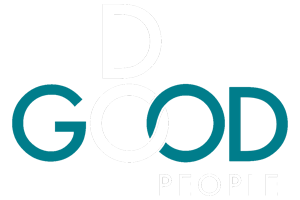The World Health Organization defines health as a state of complete physical, mental and social well-being and not merely the absence of disease or infirmity. In their Comprehensive Mental Health Action Plan, the different determinants that can affect mental health are acknowledged, including social, cultural, economic, environmental and political factors such as national policies, living standards or working conditions.
In short, mental health is not just the absence of mental disorders, but it is in fact determined by a wide range of socio economic, biological and environmental factors.
Mental health is essential, not only for an individual’s overall well-being, but also, in our increasingly interconnected global society, it is fundamental for contributing to the community, working productively, handling life’s common stresses and earning a living while enjoying life.
A global risk
According to the world economic forum, one of the main short term global risks for the upcoming two years is that of mental health deterioration. In fact, it is the fourth most worsened risk since the pandemic started, right behind social cohesion erosion, livelihood crisis and climate action failure, in that order. Not far down on the list, and significantly linked to this deteriorated reality is that of youth disillusionment.
One of the most important revelations of the report is how short term risks are predominantly social, while long term risks are primarily environmental. Of course they are all closely interconnected and should be acknowledged with the same urgency, as they are all a threat to social cohesion and livelihood.
But on the topic of mental health deterioration, only in the last two years, the number of anxiety, depression, solitude or stress cases has skyrocketed, and although the pandemic has been the most determinant factor, other global risks such as the ones mentioned before have also contributed to this social deterioration. In fact, the WHO estimates more than 53 million additional depression cases, making it the leading global cause of disability.
Additionally, numbers show that people with mental health issues have a bigger probability of being or becoming unemployed, consequently having lower income levels. This has a direct impact on the economy’s productivity; in fact, the global economy is estimated to lose close to a billion dollars per year solely because of anxiety and depression cases.
Mental health in the workplace
This context has motivated companies and organizations to promote growing efforts to support and take care of employees’ mental health as a key determining factor for the company’s health and sustainability concerns. But, what can companies do?
According to the OECD 2021 report Fitter Minds, Fitter Jobs : From Awareness to Change in Integrated Mental Health, Skills and Work Policies, the workplace should help promote good mental health and support employees on mental health issues by developing and applying policies that assess psychosocial risks, increasing awareness and competence of line managers in regards to mental health, and providing a strong support system for employees returning to work after experiencing mental health issues or a sick leave.
The approach recommended in the report is a three W approach: who, when and what. It suggests establishing a clear understanding of who is providing the support, when the support is taking place and what kind of support is being provided. These three questions and an integrated strategy for implementing them are the basis for making the necessary mental health support effective.
- WHO: Involving and training front-line actors across society. This is, mental health problems cannot be left for specialist and mental health care workers alone, but rather train professionals across sectors and institutions to ensure there are individuals with experience and understanding of mental health issues in the workplace.
- WHEN: Early identification, intervention and support. One of the main goals of the WHO regarding the approach to mental health is that of early identification and treatment as the most effective way to tackle the issue. Workplace policies and measures are an essential part of this, and it is based upon the idea that supporting people to stay in work is more effective than helping them return to work, or re-introducing them in the job market.
- WHAT: Work has a strong impact on mental health, and meaningful work can be a contributing factor to better health conditions. In this regard, enforcing and promoting psychosocial risk assessments in the workplace is only possible with the involvement of occupational health services, mental health practitioners and the adequate channel for a dialogue between employers and employees.
Awareness and normalization
A fundamental part of any mental health plan or strategy is to first and foremost raise awareness and normalize discussions around issues of such nature. This is key to avoid discrimination, which is still widespread, and break mental health taboos that prevent many people from thriving personally and proffessionaly.
Employers have an important role to play in helping employees dealing with mental health struggles as individuals spend a significant amount of their lives in the workplace. By implementing strategies that raise awareness of mental health in the workplace and creating guidelines on the matter, it can help align managers, workers and human resources to better support those struggling with mental health.
Preventing the worsening of mental health and promoting good health require many layers of policies in the workplace, acknowledging psychosocial risks as a core element of occupational health and safety.
Engagement and purpose against mental deterioration
As mentioned before, meaningful work is key to combating mental health problems. The most effective way to procure a meaningful experience while at work is for companies to have a clearly defined purpose that materializes not only in the positive impact on society and the planet, but also in the internal corporate culture that engages stakeholders to work for a common and meaningful cause.
People now more than ever look for companies that have a clear positive impact on the world and whose decisions and behaviors are something they can feel proud of being a part of. After all, the purpose of a company is an emotional matter, just as much as personal or individual purposes are. This is why the purpose of an organization is significantly related to the mental health of employees in a given company.
In fact, before jumping into action it is essential to connect the purpose at the heart of the company, embracing all the complexities that come with it, including the strategy and the operations needed to pursue that strategy. However, this cannot be achieved without the engagement of all parts of the company, from top management to employees and other relevant stakeholders.
Aligning the purpose with the social and environmental impact and the overall strategy are the fundamental base for a purpose driven company that attracts and retains the best talent, as well as procuring employees with meaningful work.
Engaging through transparency
In DoGood we believe that it is precisely through partnership that we can enhance the value of our project and help pave the way to a more healthy and sustainable future. We want to serve as a benchmark for improvement and building of a strategy by prioritizing transparency and measurable information in order to bring light to the scope of the responsibility and sustainability performance of an organization.
In this regard, it is essential to our work to promote good corporate governance, meaning that the processes of disclosure and transparency are followed so as to provide regulators and shareholders as well as the general public with precise and accurate information about the financial, operational and other aspects of the company, including a more accurate definition of the ESG performance.
We have developed a corporate government tool that helps establish ESG impact objectives for employees in regards to the sustainability strategy of the company. Through our technology we are able to activate and track employees’ impact, creating engagement that translates into improved ESG metrics, reputational value and an overall positive impact for the environment and society.
If you want to know more about how we work to create a positive social and environmental impact, click here.







